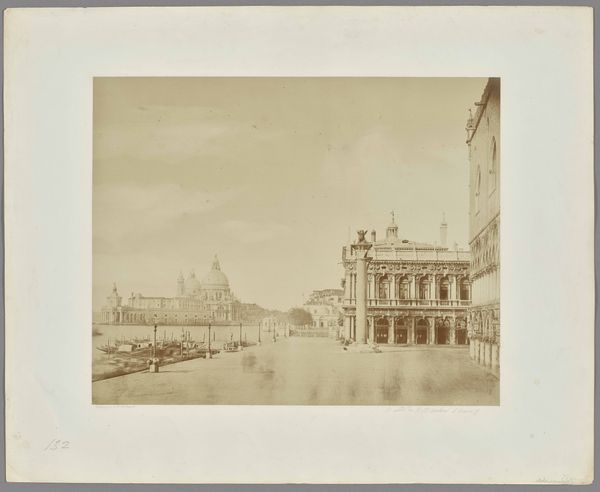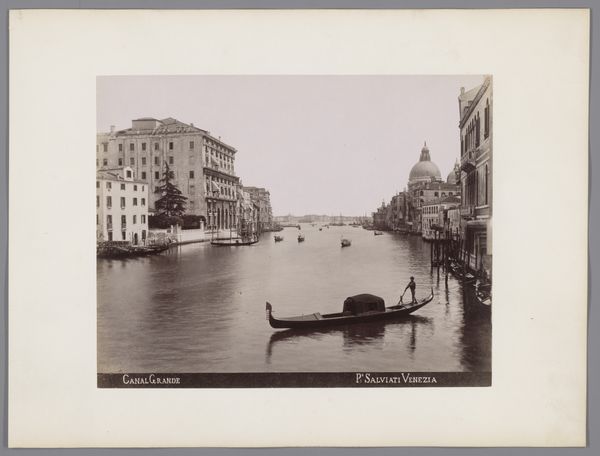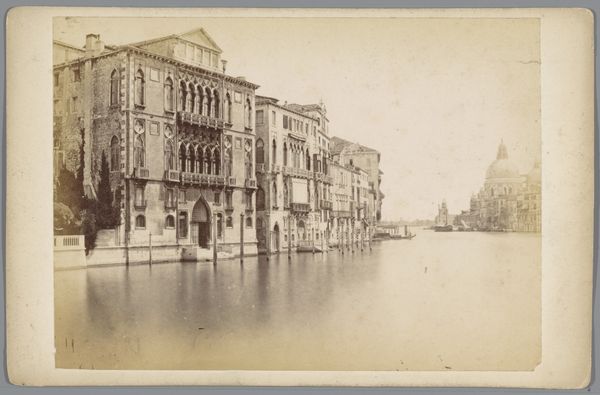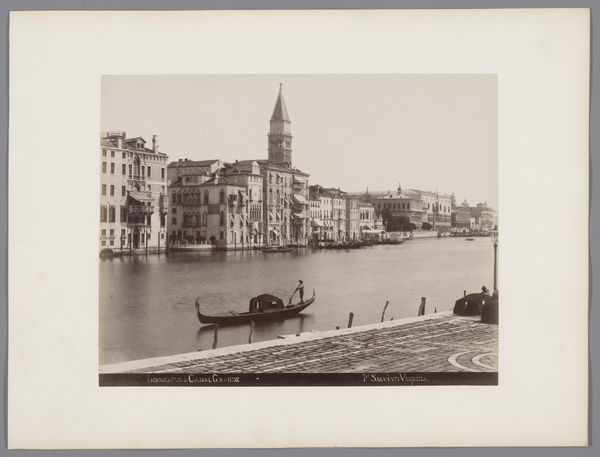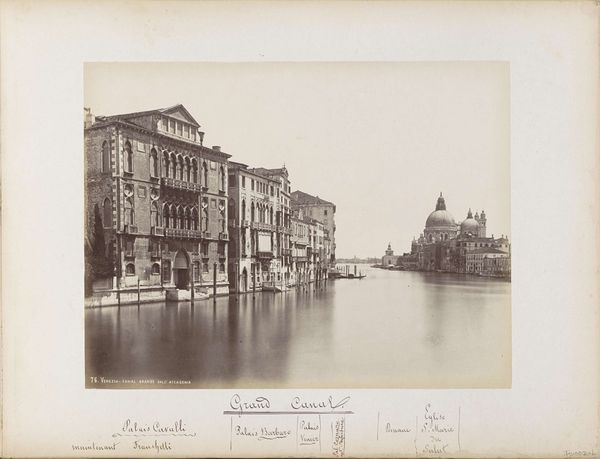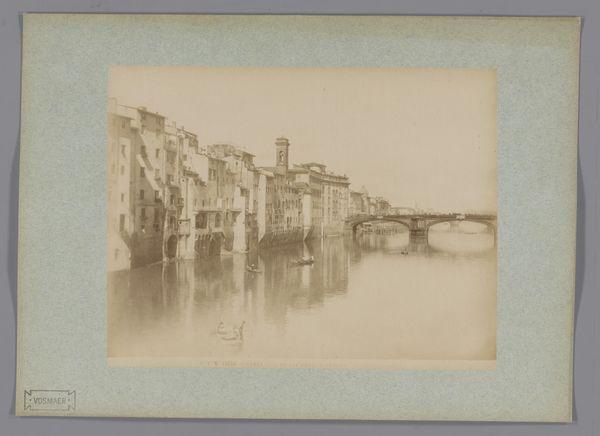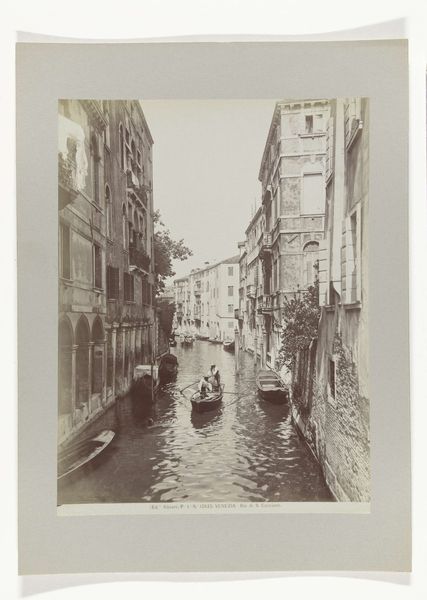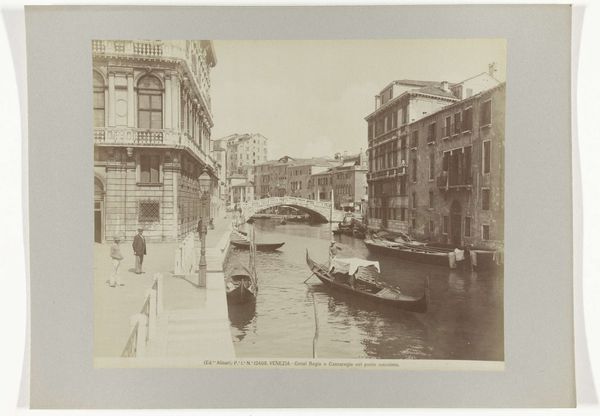
Venice_ View of the Canal Grande and Santa Maria della Salute from the Ponte della Carità c. 1860 - 1870
0:00
0:00
Copyright: Public Domain
Curator: Let’s spend a moment with this captivating image of Venice. It's a photograph entitled "Venice, View of the Canal Grande and Santa Maria della Salute from the Ponte della Carità," captured circa 1860-1870 by Giorgio Sommer. It is an albumen print, currently residing here at the Städel Museum. Editor: It's incredibly serene. The tonal range achieved through the albumen print process gives it such a soft, almost melancholic mood. It speaks to a romanticised, almost depopulated version of Venice, removed from the chaos of contemporary tourism. Curator: Sommer’s perspective is important. These were times of great change in Italy, as the Risorgimento reshaped national identity and the political landscape. The representation of Venice, a city laden with historical significance, becomes incredibly meaningful. Think about who had access to create, consume, and distribute such images. Editor: Absolutely. The composition itself is carefully constructed to reinforce power dynamics. The grand architecture lines the canal as a reminder of historical Venetian authority and control. I am particularly curious to understand who commissioned these kinds of images and how they used them. Were they souvenirs? Were they political tools, creating nostalgia? Curator: Likely both, and more. This photograph would have been distributed widely to an upper and middle-class audience that was travelling or had aspirations of traveling. Beyond simply depicting beauty, images such as these would contribute to constructing an idea of Italian cultural superiority during this turbulent period of nation-building. The details of the image also bear remembering: note the presence, or perhaps pointed absence, of gondoliers who propelled Venice's commerce and communications and who have been strategically left out, shifting the focus from labor to leisure. Editor: It definitely forces us to confront how beauty and history can be manipulated and molded. We need to understand how visual culture creates these mythologies of nations. Sommer has given us an important visual document that is charged with class and political aspirations, far removed from our contemporary context. Curator: Indeed, grappling with these complexities allows us to interpret and appreciate Sommer's work more completely. We recognize that this seemingly idyllic vista served purposes far beyond simple visual pleasure.
Comments
stadelmuseum almost 2 years ago
⋮
Early photographers took orientation from veduta painting, which owed its development to eighteenth-century tourism. As in Nerly’s composition, the dome of Santa Maria della Salute also dominates the scene in the shot by Carlo Naya. Here, however, it does not mark the centre of the composition but has been shifted to the right, drawing the viewer’s gaze somewhat further into the depths towards the Adriatic Sea. Owing to technical limitations, photographers had to do without the reproduction of atmospheric phenomena. The long exposure times transformed the waves into a smooth surface. To prevent the movement of the clouds in the sky from causing streaks, the photographer covered that area of the negative with black or red ink before exposure. The result was an evenly bright background that sets off the minute details of the pin-sharp architecture to especially good effect.
Join the conversation
Join millions of artists and users on Artera today and experience the ultimate creative platform.
